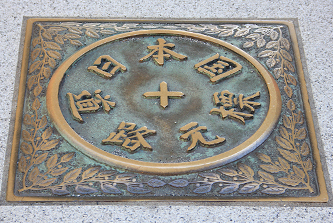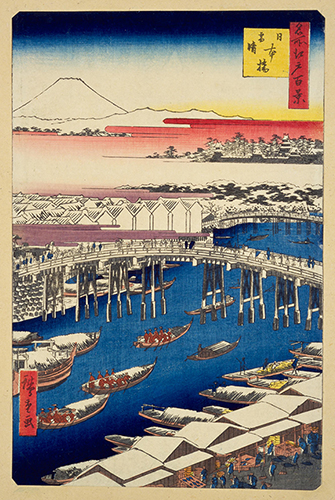The development of Nihonbashi was greatly influenced by the existence of “roads.” The Edo shogunate established the Gokaido (Five Routes) as the starting point, built a network of “waterways” for the supply of goods, and created merchant districts by means of alleys. The history of such roads reveals the secret of Nihonbashi’s success.
Nihonbashi served as the starting point of the Gokaido (Five Routes) and was once considered the center of Japan
In 1601, the Edo shogunate established the Tokaido, Koshu Kaido, Oshu Kaido, Nikko Kaido, and Nakasendo roads connecting Edo to various regions, and in 1604, Nihonbashi was designated as the starting point of these important roads. In the Edo Shogunate’s geographical book, “Gofunai Biko” (Notes on the Lord’s City), there is an entry that states, “This bridge shall be the center of Edo, travel to other countries shall begin here, and its name shall be Nihonbashi,” indicating that the shogunate was trying to develop the Gokaido (Five Routes) using the Nihonbashi as the starting point. Eventually, Nihonbashi developed into a city unlike any other in Japan, where many people and cultures from all over the country gathered and interacted with one another.

A city built on waterways
The population of Edo during the middle of the Edo period was said to be as high as 1.2 million, and the existence of large rivers was indispensable for the supply of goods for daily life. Therefore, waterways leading to the sea were constructed, and city planning was developed so that goods from all over the country could enter the city of Edo by boat.
A number of canals and riverbanks were built in commercial areas facing the sea, and the riverbanks of the Nihonbashi River, Kyobashi River, Sanjikkenhori, and Hatchobori, among others, became key routes, known as “the main artery of water transportation.”

Nihonbashi served as the starting point of the Gokaido (Five Routes) and was once considered the center of Japan
During the Edo period, housing lots with a frontage of several ken and a depth of 20 ken (1 ken ≈ 1.81 m) were allocated along Nihonbashi-dori (Tokaido/Nakasendo) and Honmachi-dori, and these became the residential areas for the townspeople. Thus, the alleys of Nihonbashi developed into vibrant districts with merchant row houses facing the main street and the bustle of peddlers and street vendors.